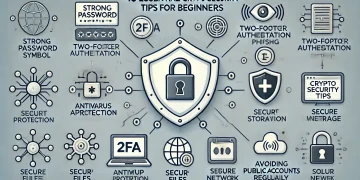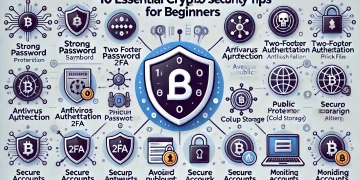Cryptocurrency mining remains an intriguing entry point into the digital currency ecosystem, offering opportunities for both profit and participation in blockchain networks. While the landscape has evolved significantly since Bitcoin’s inception, mining continues to play a crucial role in maintaining and securing various cryptocurrency networks. This comprehensive guide will walk you through the essential steps, considerations, and requirements for starting your mining journey.
Understanding the Basics of Cryptocurrency Mining
Before diving into the technical aspects, it’s crucial to understand what cryptocurrency mining actually entails. At its core, mining is the process of validating transactions and adding them to the blockchain through complex mathematical calculations. Miners compete to solve these calculations, and successful ones are rewarded with newly minted cryptocurrencies and transaction fees. This process, known as Proof of Work (PoW), ensures the security and integrity of the blockchain network.
The mining process involves sophisticated hardware running specialized software that performs these calculations continuously. As more miners join the network, the difficulty of these calculations increases, requiring more computational power to successfully mine blocks. This dynamic system ensures a steady rate of new coin creation while maintaining network security through distributed consensus.
Essential Hardware Requirements
Choosing the Right Mining Equipment
The most critical decision in starting your mining journey is selecting appropriate hardware. For most major cryptocurrencies, there are three main categories of mining equipment: ASICs (Application-Specific Integrated Circuits), GPUs (Graphics Processing Units), and CPUs (Central Processing Units). Each type has its advantages and limitations, and the choice depends on your mining goals, budget, and the specific cryptocurrency you plan to mine.
ASIC miners offer the highest hashrates and efficiency for specific algorithms but are limited to mining only one type of cryptocurrency. They represent a significant investment and are best suited for serious miners focusing on particular coins like Bitcoin. GPU mining provides more flexibility, allowing you to mine different cryptocurrencies and switch between them based on profitability, though with lower efficiency than ASICs for specific algorithms.
Setting Up Your Mining Operation
Creating an Optimal Mining Environment
Proper setup of your mining operation is crucial for both efficiency and longevity of your equipment. Mining hardware generates significant heat and requires adequate cooling to prevent performance degradation and hardware damage. A well-ventilated space with temperature control is essential. Consider factors such as airflow, ambient temperature, and humidity when choosing your mining location.
The power supply infrastructure is equally important. Mining equipment requires stable, continuous power supply with appropriate voltage and amperage. Professional-grade power supplies with high efficiency ratings are recommended to minimize electricity waste and protect your equipment from power fluctuations.
Software Configuration and Pool Selection
Essential Mining Software
The choice of mining software depends on your hardware and the cryptocurrency you’re mining. Popular options include NiceHash for beginners, CGMiner for advanced users, and specific mining software provided by hardware manufacturers. The software needs to be properly configured with your mining pool credentials and optimal settings for your hardware.
Choosing a Mining Pool
Most individual miners join mining pools to increase their chances of earning rewards. Pools combine the computational power of multiple miners and share rewards based on contributed hashpower. When selecting a pool, consider factors such as pool size, fee structure, payout methods, and minimum payout thresholds. Larger pools offer more consistent rewards but might have higher fees, while smaller pools might offer better terms but with more variable rewards.
Financial Considerations
Calculating Profitability
Before making any investment in mining equipment, it’s crucial to calculate potential profitability. This calculation should include:
- Equipment costs (hardware, cooling, infrastructure)
- Electricity costs in your area
- Pool fees and other operational expenses
- Current cryptocurrency prices and mining difficulty
- Projected network difficulty increases
- Equipment depreciation
Managing Operating Costs
Successful mining operations require careful management of ongoing costs. Electricity typically represents the largest operational expense, making energy efficiency crucial for profitability. Consider negotiating special electricity rates with providers or exploring locations with lower energy costs. Regular maintenance of equipment can help maintain efficiency and prevent costly breakdowns.
Security and Maintenance
Protecting Your Mining Operation
Security considerations should include both physical and digital aspects. Physical security measures protect your equipment from theft or damage, while cybersecurity measures prevent unauthorized access to your mining operation. Implement strong passwords, use secure connections, and regularly update your mining software to protect against vulnerabilities.
Regular Maintenance Requirements
Proper maintenance extends equipment lifespan and maintains optimal performance. This includes regular cleaning to remove dust, checking and replacing thermal paste when necessary, and monitoring performance metrics. Establish a regular maintenance schedule and keep detailed records of equipment performance and maintenance activities.
Scaling Your Mining Operation
Growth Strategies
As you gain experience and profitability, you might consider scaling your operation. This requires careful planning and consideration of factors such as:
- Additional space requirements
- Power infrastructure upgrades
- Cooling system expansion
- Equipment diversification
- Risk management strategies
Frequently Asked Questions
What is the minimum investment needed to start mining?
The initial investment varies depending on your chosen cryptocurrency and hardware type. A basic GPU mining setup might cost $1,000-$3,000, while ASIC miners can range from $2,000 to $10,000 or more.
How long does it take to see a return on investment?
ROI periods vary significantly based on equipment efficiency, electricity costs, and market conditions. Under optimal conditions, you might see returns within 6-12 months, but market volatility can extend this timeline.
Can I mine cryptocurrency on my personal computer?
While possible for some cryptocurrencies, mining on personal computers is generally not profitable due to low hashrates and high electricity costs relative to specialized mining equipment.
What happens if my mining equipment fails?
Equipment failure can result in lost mining time and requires immediate attention. Having backup equipment or repair plans can minimize downtime and maintain profitability.
How do I choose which cryptocurrency to mine?
Consider factors such as mining difficulty, coin price, hardware requirements, and long-term potential. Many miners focus on established cryptocurrencies or use profit-switching software to automatically mine the most profitable coin.
Starting a cryptocurrency mining operation requires careful planning, significant investment, and ongoing management. Success depends on making informed decisions about equipment, location, and operational strategies while staying adaptable to changing market conditions. As the cryptocurrency landscape continues to evolve, staying informed about new developments and maintaining efficient operations will be crucial for long-term success in mining.






























